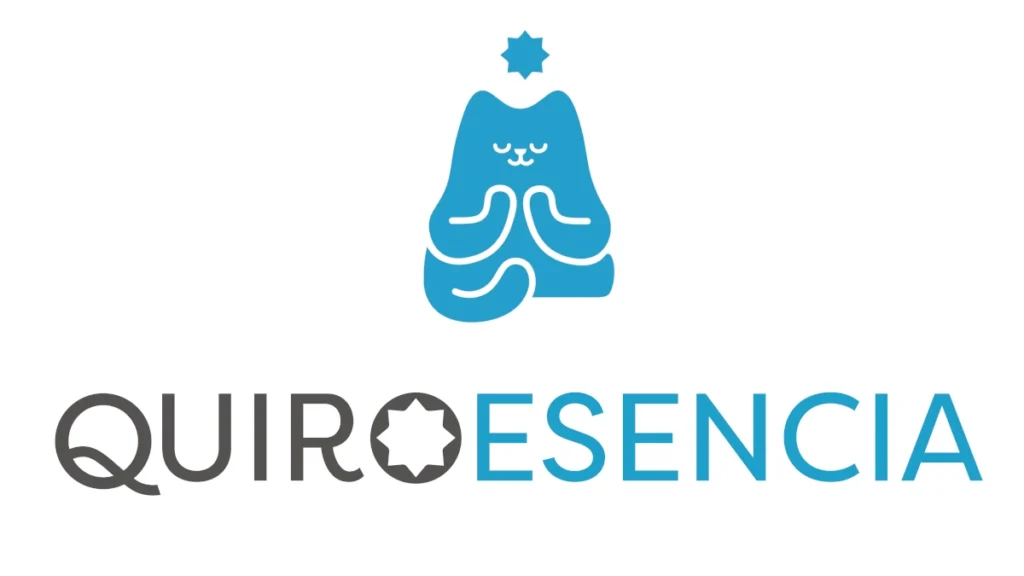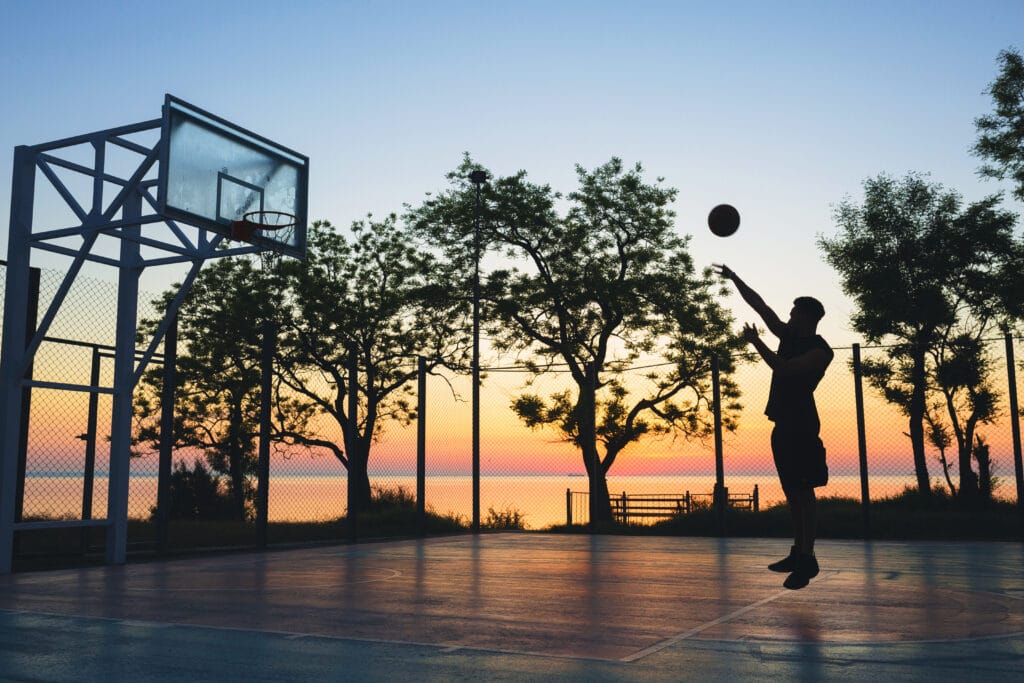The role of massage in sport.
Chiromassage is a manual technique that uses different maneuvers to work on the soft tissues of the body, such as muscles, tendons, and ligaments. difference from other types of massage More relaxing, the importance of chiromassage in sports rehabilitation is based on seeking to relieve tension, improve circulation and facilitate recovery from injuries.
In sports, chiromassage plays an essential role. Athletes, regardless of their competition level, subject their bodies to intense physical exertion, which can lead to muscle strain, stiffness, postural imbalances, and even injuries. This is where chiromassage comes into play, not only as a tool for treating injuries but also as a preventative method to keep tissues in optimal condition.
Furthermore, sports massage promotes recovery after physical activity, helping the body eliminate toxins such as lactic acid, which causes the dreaded "dope pain." For all these reasons, it has become a key tool in both the prevention and rehabilitation of sports injuries, contributing to the well-being and performance of athletes.
Sports injury prevention
One of the most important aspects of the chiromassage in the sports field is its ability to prevent injuries. This type of massage focuses on treating existing ailments, as well as preparing muscles and tissues to withstand physical exertion, minimizing the risk of injury.
How does chiromassage prepare muscles for physical exertion?
Before a competition or intense training session, chiromassage can act as a deep muscle warm-up tool. Through specific maneuvers, such as quick kneading, vibrations, or gentle friction, the following are achieved:
- Increase blood circulation: This improves the supply of oxygen and nutrients to the muscles, preparing the muscle fibers for exertion.
- Increase muscle elasticity: Muscles and tendons become more flexible, reducing the risk of pulls or tears.
- Reduce accumulated tension: Sometimes athletes are unaware of small muscle tensions that can become bigger problems. Chiromassage locates and releases these tense areas before they cause pain or limitations.
For example, I remember treating a cyclist who regularly came before his races. In his case, the preventative massage focused on releasing tension in his calves, quadriceps, and psoas, which were the areas that endured the most stress in his sport. With this routine, he avoided muscle overload during long races, where the risk of cramps was high.
Treatment of acute and chronic injuries
Chiromassage is a fundamental tool in the treatment of both acute injuries (such as sprains or muscle tears) and chronic injuries (such as recurrent contractures or tendonitis). In each case, the technique is adapted to the stage of the injury and the specific needs of the patient, always working in conjunction with other therapies or under medical supervision if necessary.
Sprains
A sprain is an injury affecting the ligaments, usually due to excessive stretching or twisting. Chiromassage is not directly applied in the acute phase, when there is inflammation, intense pain, and bruising. However, once the inflammation has subsided (subacute or chronic phase), massage helps to:
- Reduce stiffness in the affected joint.
- Improve blood circulation to accelerate tissue regeneration.
- Prevent the formation of adhesions or fibrosis.
For example, in the case of a sprained ankle, massage would initially be applied to the surrounding areas to activate circulation and release tension, and then the joint would be carefully worked on to restore mobility and reduce residual pain.
Contractures
Muscle contractures are stiffening of muscle tissue due to overuse or poor posture. Chiromassage is especially effective in these cases because:
- It acts directly on tension points to release the affected muscle.
- Restores balance between the muscles involved, avoiding compensations.
- Improves tissue oxygenation, which reduces pain and stiffness.
Muscle tears
A muscle tear occurs when muscle fibers are torn, usually due to overexertion or a sudden contraction. During the acute phase, chiromassage is not recommended, but in later stages, it becomes a key tool for:
- Eliminate adhesions that may hinder proper tissue healing.
- Rehabilitate the elasticity and strength of the injured muscle.
- Improve circulation to accelerate the repair of damaged fibers.
Improved circulation and elimination of toxins
Chiromassage not only works directly on the muscles and tissues, but also has a significant impact on the circulatory and lymphatic systems, helping to eliminate toxins and accelerate muscle recovery.
How does massage help eliminate lactic acid?
When we exercise intensely, our body produces lactic acid as a byproduct of energy metabolism. If this acid builds up in the muscles, it can cause stiffness, pain, and muscle fatigue (what we call "DOMS"). Chiromassage works in the following ways:
- Stimulates blood flow: Maneuvers such as kneading and deep rubbing increase circulation, which facilitates the elimination of lactic acid accumulated in the muscles.
- Activates the lymphatic system: This helps drain metabolic waste and improves tissue oxygenation.
- Relax your muscles: Massage reduces muscle tension, improving their ability to recover after exertion.
Benefits of recovery after intense workouts
- Reduction of muscle fatigue: Thanks to the elimination of toxins and the supply of nutrients to the tissues, the muscles recover faster.
- Reducing the risk of injury: Muscle relaxation and improved circulation help prevent unnecessary strain and overload.
- Greater sense of well-being: In addition to the physical benefits, massage promotes a feeling of overall relaxation, which contributes to better mental recovery after exertion.
A professional cyclist I treated regularly used to suffer from lactic acid buildup after long training sessions. After each race, we performed a release massage, focusing on the quadriceps, calves, and hamstrings. The next day, she felt a noticeable reduction in muscle stiffness and was able to resume her training more comfortably.
Pain reduction and improved mobility
Chiromassage is a Effective technique to relieve pain and improve mobility in athletes, as it acts directly on the affected tissues, relieving tension, reducing inflammation in painful areas, and restoring lost range of motion. Its personalized approach allows each injury to be addressed specifically, using maneuvers tailored to the patient's needs and the type of injury.
Specific techniques to relieve pain in sports injuries
- Deep kneading
- Maintained pressures
- Passive Stretches
- Deep transverse frictions
- Gentle joint mobilizations
Chiromassage relieves temporary pain and also addresses the root cause of the problem to ensure lasting recovery and prevent relapse. This comprehensive approach makes it an essential tool in sports rehabilitation.
Muscle rebalancing and performance improvement
Chiromassage is effective in treating injuries and also plays a key role in muscle rebalancing, helping to correct imbalanced tensions that affect athletic performance. Muscle imbalances are often the result of poor postural habits, incorrect movement patterns, or repetitive strains that create imbalances in the body. These tensions can limit flexibility, decrease muscle power, and even increase the risk of injury.
How does chiromassage correct unbalanced muscle tension?
- Identifying muscle imbalances
- During the initial assessment, muscles that are tight or shortened, as well as those that are weakened or elongated, are identified. These imbalances often cause discomfort or performance limitations.
- For example, in a runner, shortening of the hip flexors and weakness in the glutes may be observed, which affects their biomechanics and can lead to lower back pain.
- Release of tension in hyperactive muscles
- Techniques such as: deep kneading and sustained pressures in overloaded or tense muscles, releasing muscle fibers and improving their elasticity.
- This not only relieves pain, but also allows the muscles to work more efficiently and in a balanced way.
- Stimulation of inactive or weak muscles
- In some cases, weakened muscles require stimulation to activate properly. Lighter, more stimulating maneuvers are used to increase blood flow and the muscle's ability to contract.
- Improved body alignment
- A chiromassage treatment not only addresses individual muscles but also seeks to improve the body's overall balance. This helps correct inefficient movement patterns, optimizing posture and reducing unnecessary tension.
Benefits for sports performance
Muscle rebalancing through chiromassage prevents injuries and also has a direct impact on athletes' performance:
- Greater efficiency in movement: A balanced body moves more fluidly, which improves performance in any sport.
- Increased power and speed: Muscles in optimal condition generate more force and respond better to stimuli.
- Lower energy expenditure: With proper balance, the body requires less effort to perform movements, which translates into greater endurance.
Perfect complement to other rehabilitation therapies
Chiromassage is a versatile technique that, when combined with other therapies such as physical therapy and osteopathy, significantly enhances the results of sports injury rehabilitation. While chiromassage focuses on muscle development and soft tissue relaxation, physical therapy provides specific tools for movement retraining and muscle strengthening, and osteopathy focuses on structural balance. This comprehensive approach addresses the injury from multiple angles, ensuring a more complete and effective recovery.
Combination of chiromassage and osteopathy
- Chiromassage:
- It works directly on soft tissues to relieve muscle tension, improve circulation, and reduce inflammation.
- Ideal for preparing the muscle before deeper techniques or therapeutic exercises.
- Physiotherapy:
- Includes specific exercises to strengthen weakened muscles, improve joint stability, and prevent relapses.
- Electrotherapy, ultrasound, and neuromuscular bandaging techniques complement the work of chiromassage.
- Osteopathy:
- It focuses on the realignment of bone and joint structures, treating blockages that may be limiting movement or causing muscle tension.
- Ideal for detecting and treating compensations that could prolong the rehabilitation process.
Benefits of combining therapies
- Faster and more complete recovery: Each therapy focuses on a specific aspect of the injury, working in a complementary manner.
- Relapse prevention: By addressing both the cause and symptoms of the injury, you reduce the risk of it recurring.
- Performance Optimization: A balanced, tension-free body works more efficiently, improving athletic performance.
A key tool for sports health
Chiromassage is an indispensable technique in sports, both for injury rehabilitation and prevention. Its benefits go beyond pain relief, as it promotes muscle recovery, improves circulation, increases flexibility, and optimizes physical performance.
Summary of the benefits of chiromassage
- Injury Prevention: By maintaining healthy tissues, correcting muscle imbalances, and preparing the body for physical exertion, chiromassage helps reduce the risk of injury.
- Effective rehabilitation: Whether treating sprains, contractures, or muscle tears, chiromassage accelerates recovery and improves mobility in the affected areas.
- Performance improvement: By relaxing muscles, eliminating tension, and promoting postural balance, the body functions more efficiently and with less energy expenditure.
- Pain relief: Thanks to its specific techniques, chiromassage reduces muscle discomfort and accumulated tension that can interfere with athletic performance.
- Ideal complement: When combined with other therapies such as physiotherapy and osteopathy, chiromassage enhances results and ensures a more complete recovery.

